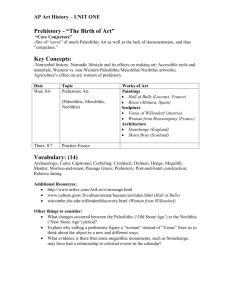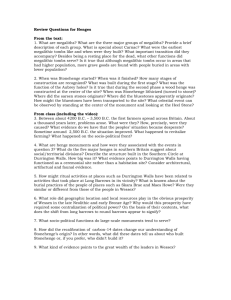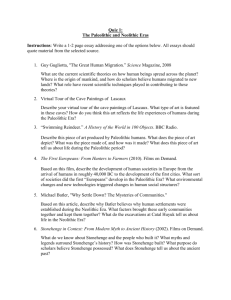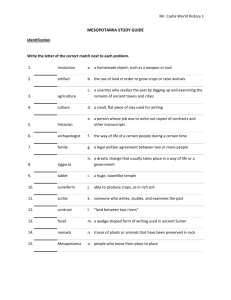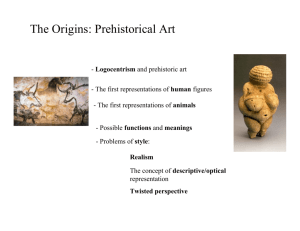Anthropology 331 Sample Questions for Second Exam
advertisement
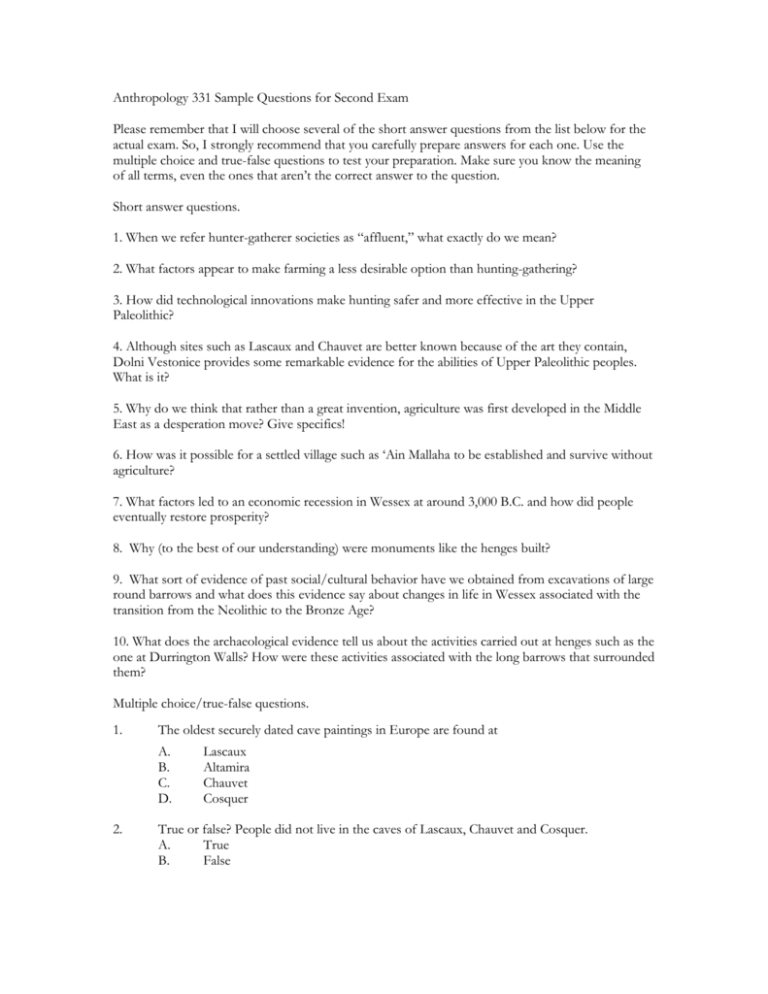
Anthropology 331 Sample Questions for Second Exam Please remember that I will choose several of the short answer questions from the list below for the actual exam. So, I strongly recommend that you carefully prepare answers for each one. Use the multiple choice and true-false questions to test your preparation. Make sure you know the meaning of all terms, even the ones that aren’t the correct answer to the question. Short answer questions. 1. When we refer hunter-gatherer societies as “affluent,” what exactly do we mean? 2. What factors appear to make farming a less desirable option than hunting-gathering? 3. How did technological innovations make hunting safer and more effective in the Upper Paleolithic? 4. Although sites such as Lascaux and Chauvet are better known because of the art they contain, Dolni Vestonice provides some remarkable evidence for the abilities of Upper Paleolithic peoples. What is it? 5. Why do we think that rather than a great invention, agriculture was first developed in the Middle East as a desperation move? Give specifics! 6. How was it possible for a settled village such as ‘Ain Mallaha to be established and survive without agriculture? 7. What factors led to an economic recession in Wessex at around 3,000 B.C. and how did people eventually restore prosperity? 8. Why (to the best of our understanding) were monuments like the henges built? 9. What sort of evidence of past social/cultural behavior have we obtained from excavations of large round barrows and what does this evidence say about changes in life in Wessex associated with the transition from the Neolithic to the Bronze Age? 10. What does the archaeological evidence tell us about the activities carried out at henges such as the one at Durrington Walls? How were these activities associated with the long barrows that surrounded them? Multiple choice/true-false questions. 1. The oldest securely dated cave paintings in Europe are found at A. B. C. D. 2. Lascaux Altamira Chauvet Cosquer True or false? People did not live in the caves of Lascaux, Chauvet and Cosquer. A. True B. False 3. Most archaeologists and art historians agree that Upper Paleolithic cave paintings A. B. C. D. E. 4. are all representations of sympathetic (hunting) magic primarily depict myths probably record the passage of time were painted for a variety of purposes shared a common, but as yet unknown purpose True or false? The process of domestication involved selection by humans for plants with brittle rachises. A. True B. False 5. The practice of removing skulls from the deceased in places such as 'Ain Mallaha, Jericho and 'Ain Ghazal is associated with A. B. C. D. 6. The earliest known domesticated plant dates to approximately A. B. C. D. 7. the use of skulls as bowls and cups in ceremonies cannibalism warfare ancestor veneration 14,000 B.C. 10,000 B.C. 9500 B.C. 8500 B.C. True or false? A Neolithic tomb with a roof is called a menhir. A. True B. False 8. The Bronze Age in Britain was characterized by A. B. C. D. E. 9. long distance trade of valuable materials burials of elite individuals construction of monumental structures all of the above B and C only The site of Jericho was probably attractive to the first people who settled there because of its A. B. C. D. E. defensive location closeness to pistachio and oak forests easy access to the Mediterranean permanent spring supply of high quality stone that could be traded 10. Originally the Aubrey Holes at Stonehenge A. B. C. D. contained small, upright bluestones that were later removed oriented the inner horseshoe to the southeast formed a circle whose purpose is unknown held 56 cremations arranged in a circular pattern
